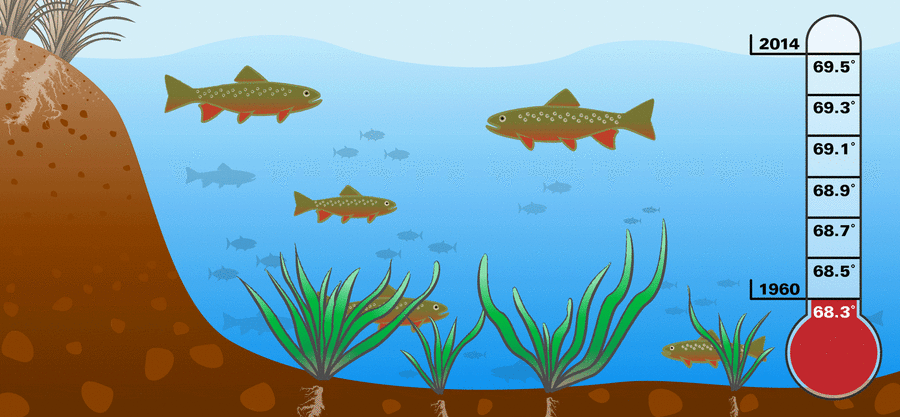Climate Change
Some effects of climate change—rising seas, warming water temperatures and prolonged periods of extreme weather—are already being observed in the Bay region.

Show image description
The animated infographic shows a river habitat that contains aquatic plants and fish. On the right side of the graphic, an old-fashioned glass thermometer contains red liquid. At the beginning of the animation, the plants are green, the river contains plentiful brook trout, and the liquid in the thermometer indicates that in 1960, the water temperature was 68.3 degrees Fahrenheit. As the animation progresses, the plants turn brown, the brook trout disappear and the liquid in the thermometer rises. By the end of the animation, the plants are dead, there are only two brook trout remaining and the liquid in the thermometer indicates that in 2014, the water temperature was 69.5 degrees.
